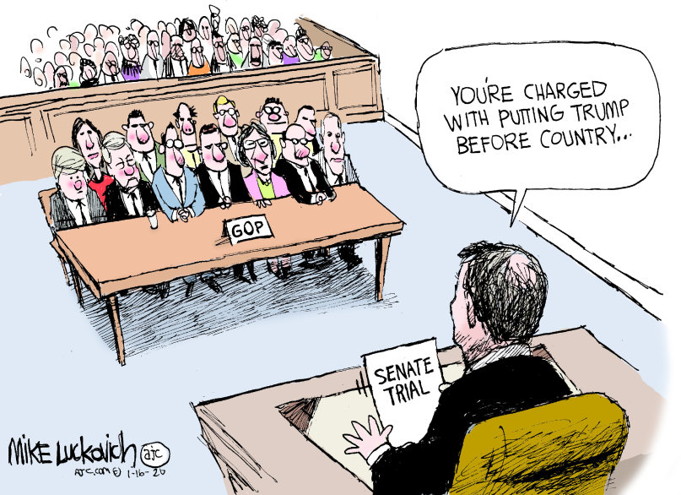Dos grandes logros en comercio internacional pueden acreditársele al Presidente Donald Trump, al comenzar este año. La Fase I del acuerdo con China ha sido celebrada por ambas partes como una victoria, porque básicamente se refiere a lo que se conoce como “fruta fácil de alcanzar.” El segundo logro fue la ratificación del nuevo TLCAN, ahora conocido como EUMCA, preservando más de $1 billón anual de comercio entre Estados Unidos, México y Canadá.
La pregunta es qué restringió las tentaciones proteccionistas que han emanado de la Casa Blanca. La explicación más plausible es que al Presidente Trump se le estaba acabando el tiempo. La incertidumbre causada por ambas negociaciones pendientes estaba lesionando algunos de los votantes decisivos en las próximas elecciones. Resignado, el Presidente Trump declaró que la negociación más difícil con China de la Fase II ocurrirá después de la elección de 2020.
Los agricultores del medio oeste sacrificaron disputadas porciones de mercado en Asia, con las exportaciones agrícolas estadunidenses en descenso desde $20,000 millones en 2017 hasta $9,000 millones en 2018. El Secretario de Agricultura Sonny Perdue admitió que “no se pueden pagar las cuentas con patriotismo.” (Washington Post 11|14|19).
A causa de los aranceles proteccionistas, el sector manufacturero supuestamente esperaba atraer nueva inversión extranjera directa, pero cayó en recesión durante la primera mitad de 2019 y los productores de maquinaria pesada, como Caterpíllar, culparon a la incertidumbre comercial.
Hacia fin de año, exasperado, un editorial en el Wall Street Journal (12|16|19) declaró, “Donald Trump es el presidente americano más proteccionista desde Herbert Hoover,” quien presidió durante la Gran Depresión.
*Analista y consultor internacional, ex-Director de la Oficina de la CEPAL en Washington. Comentarista de economía y finanzas de CNN en Español TV y radio, UNIVISION, TELEMUNDO y otros medios.
Truce
By Isaac Cohen*
Two major accomplishments in international trade can be credited to President Donald Trump, at the start of this year. The Phase I agreement with China has been celebrated by both parties as a victory, because it basically deals with what is known as “low hanging fruit.” The second accomplishment was the ratification of the new NAFTA, now known as the USMCA, preserving more than $1 trillion a year of trade between the United States, Canada and Mexico.
The question is what restrained the protectionist temptations that have so far emanated from the White House. The most plausible explanation is that President Trump was running out of time. The uncertainty caused by both pending negotiations was hurting some of the constituencies that will be decisive in the next elections. Resigned, President Trump declared that the most difficult negotiation of Phase II with China will happen after the 2020 election.
Farmers in the mid-West sacrificed hard won market shares in Asia, with US agricultural exports to China dropping from $20 billion in 2017 to $9 billion in 2018. The Secretary of Agriculture Sonny Perdue admitted “you can’t pay the bills with patriotism.” (The Washington Post 11/14/19).
Because of the protectionist tariffs, the manufacturing sector supposedly was expected to attract new foreign direct investment, but if fell into recession during the first half of 2019 and producers of heavy machinery, such as Caterpillar, blamed the trade uncertainty
By the end of the year, exasperated, an editorial in The Wall Street Journal (12/16/19) declared, “Donald Trump is the most protectionist American President since Herbert Hoover,” who presided over the Great Depression. *International analyst and consultant, former Director ECLAC Washington. Commentator on economic and financial issues for CNN en Español TV and radio, UNIVISION, TELEMUNDO and other media.






